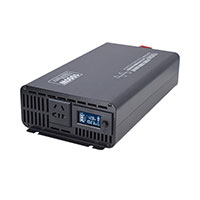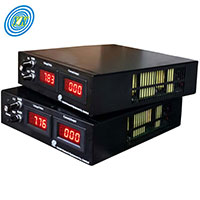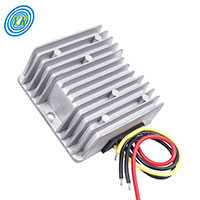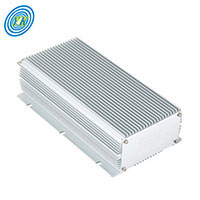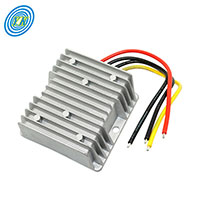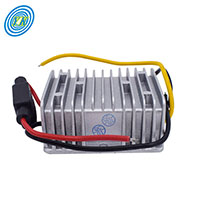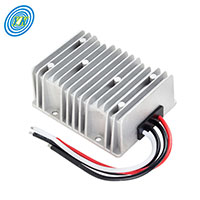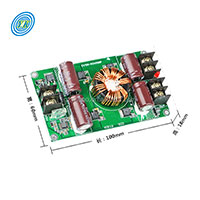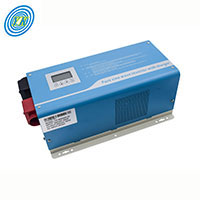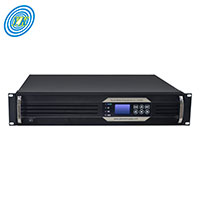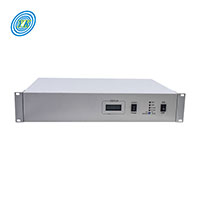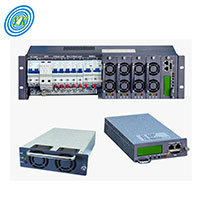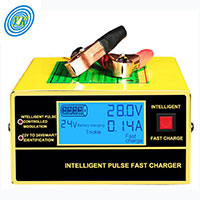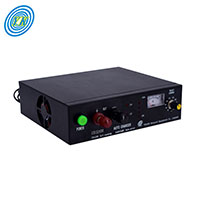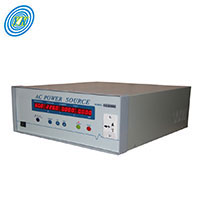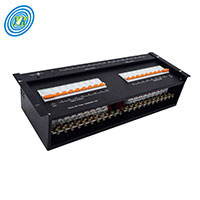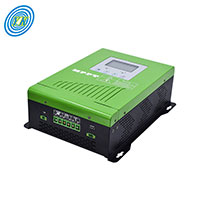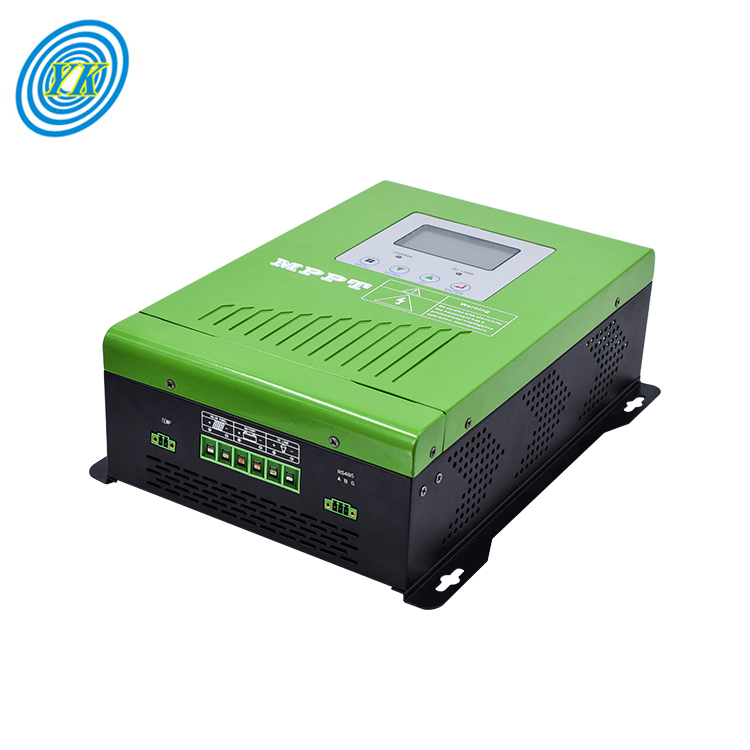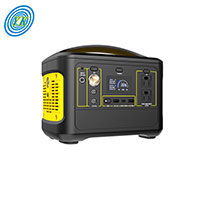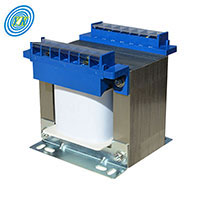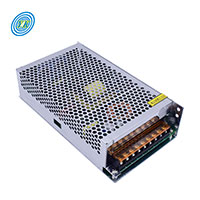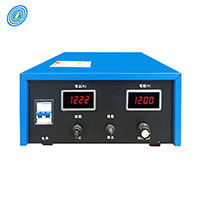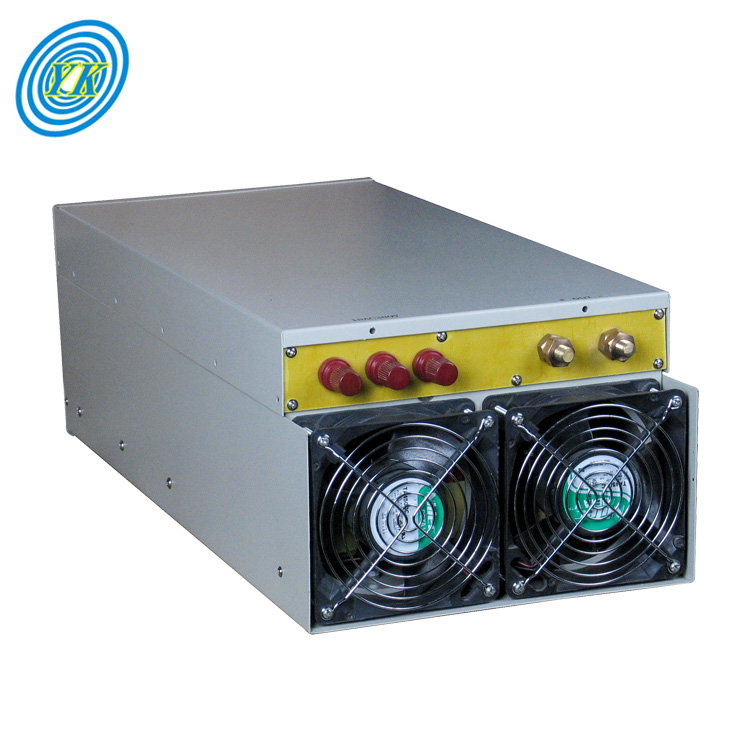
Illuminating Possibilities: Variable Power Supplies in LED Lighting Systems
Click: 784 Date: 09/15/2023 4::11::24 PM
Illuminating Possibilities: Variable Power Supplies in LED Lighting SystemsIntroductionVariable power supplies have found a significant application in LED lighting systems, providing promising solutions for energy efficiency and sustainability. With the technology's inherent flexibility, it has become a critical element in optimizing LED lighting for various applications, including commercial, industrial, and residential settings. This article explores the role of variable power supplies in LED lighting systems, focusing on their potential for energy conservation, performance improvement, and innovative applications.The Role of Variable Power Supplies in LED LightingVariable power supplies allow for the adjustment of voltage and current supplied to an LED lighting system. This flexibility enables the fine-tuning of the LED's brightness and color, enhancing the lighting quality and user experience. It also enables the system to adapt to different power conditions, ensuring optimal performance and longevity of the LEDs.Variable power supplies also play a critical role in energy efficiency. By adjusting the power supply to the exact needs of the LED system, energy waste can be minimized. This is particularly relevant in applications like solar-powered LED lighting, where the efficient use of renewable energy is crucial. For example, a solar photovoltaic power plant can directly convert sunlight into electricity, which then powers the LED lighting system. The variable power supply ensures the LED system operates optimally under varying sunlight conditions, maximizing the utilization of solar energy.Benefits and ApplicationsThe use of variable power supplies in LED lighting systems brings numerous benefits. Firstly, it enhances the energy efficiency of the lighting system, reducing energy consumption and costs. Secondly, it improves the performance and lifespan of LEDs by protecting them from power fluctuations and overloads. Finally, it offers flexibility in lighting control, allowing for the adjustment of brightness and color based on user preferences or application needs.Variable power supplies in LED lighting have found applications in a wide range of fields. In the commercial sector, they are used in office buildings and shopping malls to achieve energy-efficient, high-quality lighting. In the industrial sector, they are applied in manufacturing facilities and warehouses for reliable, adaptable lighting. In the residential sector, they are used in homes for customizable, energy-saving lighting. Moreover, they are also applied in outdoor lighting, vehicle lighting, and even artistic lighting installations, demonstrating their versatility and potential for innovation.Future ProspectsThe future of variable power supplies in LED lighting systems looks promising. With the ongoing advancements in power electronics and LED technology, we can expect further improvements in efficiency, performance, and functionality. Moreover, as the demand for sustainable energy solutions grows, the application of variable power supplies in renewable energy-powered LED lighting systems is set to expand.In conclusion, variable power supplies play a vital role in LED lighting systems, offering flexibility, efficiency, and improved performance. As the technology continues to evolve, we can expect to see more innovative and impactful applications in the future.
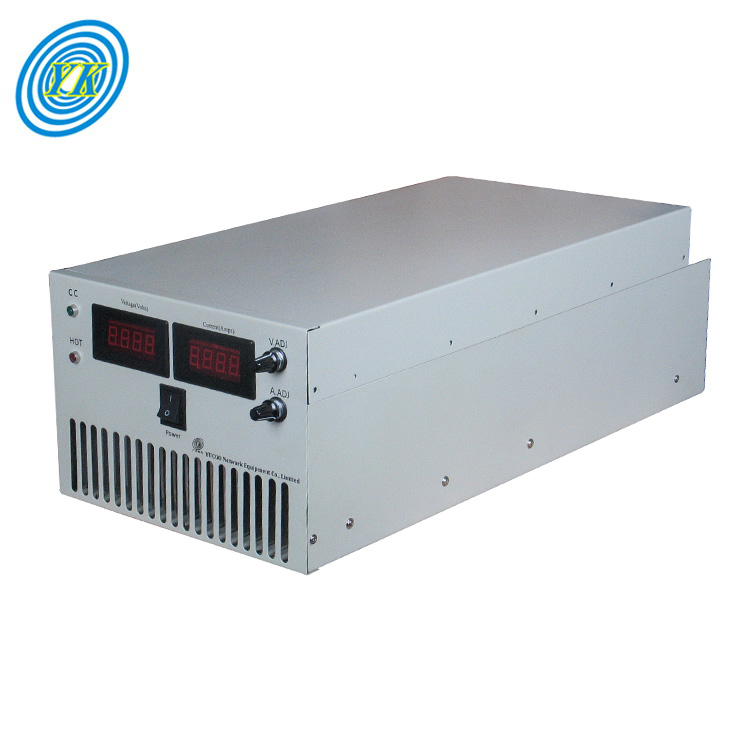
Uninterrupted Power: Variable Power Supplies in Data Centers and Server Farms
Click: 708 Date: 09/15/2023 3::50::29 PM
Uninterrupted Power: Variable Power Supplies in Data Centers and Server FarmsIntroductionUninterruptible Power Supply (UPS) systems are critical equipment designed to reliably feed sensitive and crucial loads such as data centers, communication networks, and IT servers. While conventional UPS systems, including online, offline, and line-interactive UPSs, are prevalent in the industry, there is a continuous need for development to reduce cost and volume, and enhance efficiency and reliability.The Growing Importance of UPS in Data CentersThe role of UPS systems in data centers and server farms is more important than ever. As digital technologies continue to evolve and the demand for data storage and processing increases, the need for uninterrupted, reliable power supply becomes a priority. Any power disruption can lead to significant data loss, service downtime, and potentially huge financial implications.Variable Power Supplies: A Game ChangerVariable power supplies come into the picture as a game-changer in this context. They provide a flexible and adaptable power solution that can be adjusted based on the load requirements of the data center. This flexibility can lead to more efficient power usage, potentially lowering operational costs and reducing the environmental impact.UPS System Design in Data CentersThe design of UPS systems in data centers is a complex process that involves careful consideration of the data center's requirements, the UPS's capabilities, and the potential risks and challenges. The design process typically includes defining the power capacity needs, determining the UPS configuration, selecting the UPS type, and planning for potential power failures or disruptions.Future DirectionsAs the demand for data continues to grow, so does the need for reliable and efficient power supply solutions. Future research directions include modeling the lifetime of UPS systems, monitoring their condition, and predicting failures. Industrial, experimental, and hardware-in-the-loop tests and validation are also key areas of focus.In conclusion, variable power supplies in data centers and server farms play a crucial role in maintaining uninterrupted power, ensuring the smooth operation of digital services, and paving the way for more sustainable and efficient power management solutions.
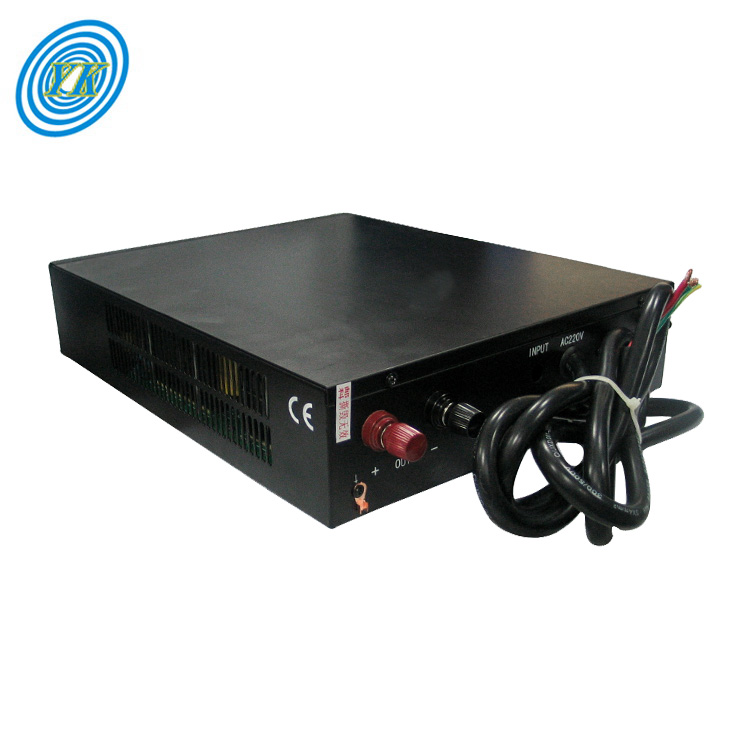
Precision and Flexibility: Variable Power Supplies in Industrial Automation
Click: 824 Date: 09/15/2023 3::39::09 PM
Precision and Flexibility: Variable Power Supplies in Industrial AutomationIndustrial automation has revolutionized various sectors, offering precision, flexibility, and efficiency. One of the key components driving this revolution is the variable power supply. This article will explore how variable power supplies are utilized in industrial automation, enhancing precision and flexibility in the process.Variable Power Supplies and Their Role in Industrial AutomationVariable power supplies, also known as adjustable or regulated power supplies, allow the user to adjust the output voltage within a certain range. They are essential in industrial automation as they provide the power necessary for various operations and processes. They also ensure the safe and efficient operation of machinery by providing a steady and reliable power source.In industrial automation, variable power supplies are used in a wide range of applications, such as powering Programmable Logic Controllers (PLCs), sensors, and other electronic devices. They are also crucial in testing and measurement systems, where precision and high resolution are required.Precision in Industrial AutomationPrecision is a critical factor in industrial automation. Variable power supplies contribute to this by providing accurate voltage levels, leading to precise control and operation of machinery and equipment. For example, in test and measurement systems, the accuracy of a variable power supply improves the overall accuracy and granularity of the equipment, leading to finer control and excitation of external sources and nano-actuators.In PLCs, variable power supplies are crucial for the accurate operation of the controller. PLCs are digital computers used for industrial automation to control various types of machines or processes. They are designed for multiple arrangements of digital and analog inputs and outputs, extended temperature ranges, immunity to electrical noise, and resistance to vibration and impact.Flexibility in Industrial AutomationFlexibility is another essential aspect of industrial automation. Variable power supplies offer flexibility by allowing the user to adjust the output voltage according to the requirements of the device or system being powered. This capability is particularly beneficial in situations where different devices require different voltage levels.For instance, in PLCs, variable power supplies provide the flexibility to power various components such as the CPU module, input and output modules, and other additional components like network interfaces and communication adapters.Moreover, the trend in industrial power supplies is moving towards compact, high efficiency, high power density solutions. These solutions provide robust and reliable power for industrial power needs, offering flexibility in terms of installation and operation.ConclusionIn conclusion, variable power supplies play a significant role in industrial automation, offering precision and flexibility. They provide the necessary power for various operations, contribute to the accuracy of systems, and offer the flexibility of adjustable voltage levels. As industrial automation continues to evolve, the importance of variable power supplies in this sector is set to increase.
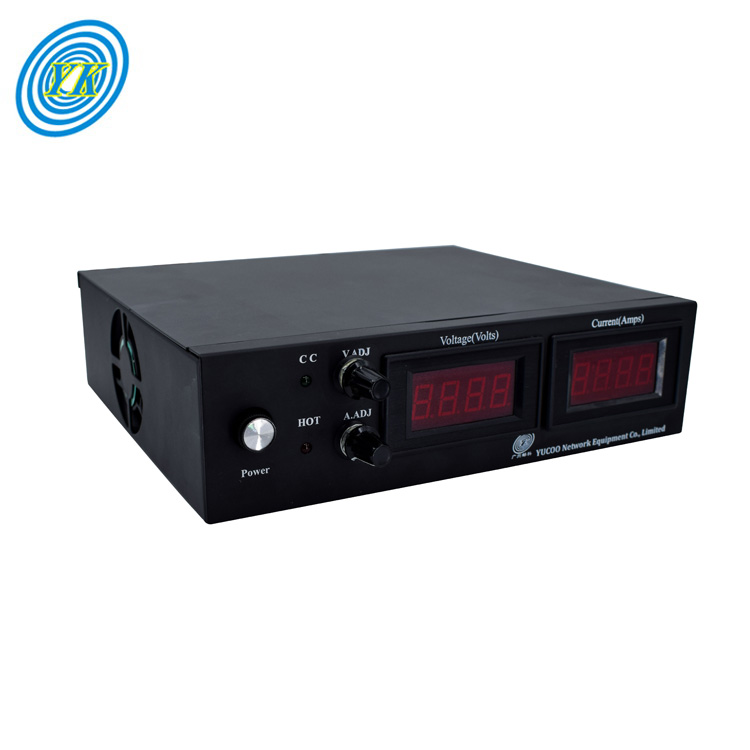
Powering the Future: Variable Power Supplies in Smart Grid Technology
Click: 910 Date: 09/15/2023 2::06::40 PM
Powering the Future: Variable Power Supplies in Smart Grid TechnologyThe advent of smart grid technology is revolutionizing the power industry, providing efficient and sustainable management of energy resources. At the heart of this transformation are variable power supplies. They offer the flexibility and control needed to optimize energy distribution and consumption, paving the way for a greener and more resilient power infrastructure.The Role of Variable Power Supplies in Smart GridsVariable power supplies are essential to the functioning of smart grids. They enable dynamic adjustment of voltage and current levels, facilitating efficient power management and distribution. This is particularly important for handling renewable energy sources like solar and wind power, which can be intermittent and variable.For instance, a smart grid can use variable power supplies to manage the power generated from solar panels. When solar irradiance is high, the power supply can increase the voltage to maximize energy capture. Conversely, when solar irradiance is low, the power supply can reduce the voltage to prevent energy wastage.Benefits of Using Variable Power Supplies in Smart GridsVariable power supplies bring several advantages to smart grids:Efficiency: They help optimize power usage by adjusting voltage and current levels based on demand and supply conditions. This can lead to significant energy savings and reduce the grid's environmental impact.Flexibility: Variable power supplies allow smart grids to adapt to varying energy inputs, especially from renewable sources. This flexibility is crucial for integrating renewables into the grid and moving towards a sustainable energy future.Resilience: By enabling dynamic control over power distribution, variable power supplies can help maintain grid stability and prevent blackouts during peak demand periods or power surges.Challenges and SolutionsDespite their benefits, the integration of variable power supplies into smart grids also presents challenges. One of the main issues is the potential for power quality problems, such as voltage fluctuations and harmonic distortions, especially when dealing with renewable energy sources.To mitigate these issues, advanced control methods and power quality compensators are being developed. These technologies can help maintain the balance of the distributed generation network and grid side network, ensuring the smooth operation of the grid.Furthermore, the advancement of communication protocols and the application of artificial intelligence in data analysis and control of smart grids are also contributing to the effective management of variable power supplies.ConclusionVariable power supplies are indispensable tools in the development and operation of smart grids. They provide the necessary adaptability to cope with the fluctuating nature of renewable energy sources and the varying demand patterns of modern power consumers. While challenges remain, ongoing technological advancements are paving the way for more efficient and resilient power grids. The future of power management, indeed, lies in the smart application of variable power supplies.
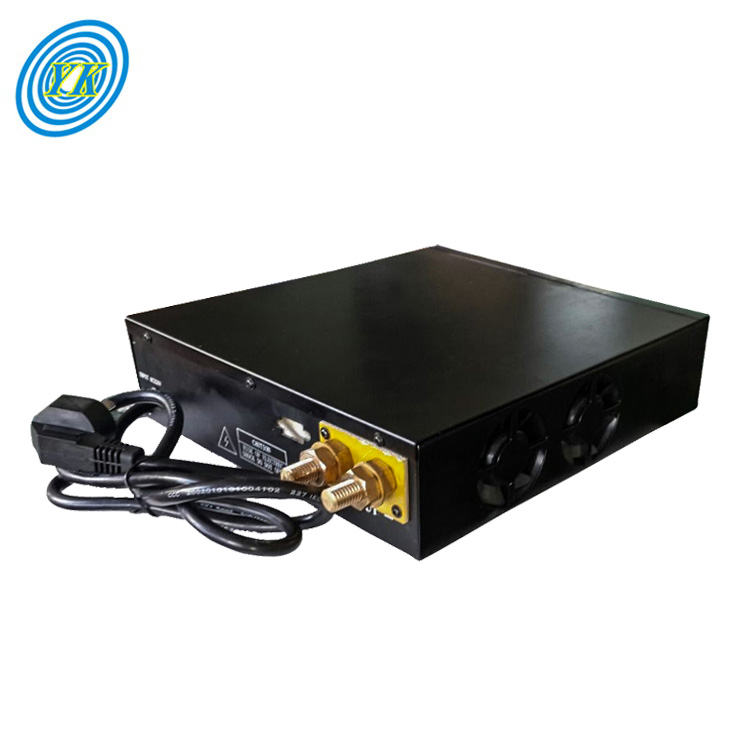
From Lab to Life: How Variable Power Supplies are Advancing Biomedical Research
Click: 911 Date: 09/15/2023 10::14::51 AM
From Lab to Life: How Variable Power Supplies are Advancing Biomedical ResearchThe world of biomedical research has been revolutionized by the advent of variable power supplies. These advanced tools are enhancing the precision and control of various lab equipment, leading to more accurate and efficient research processes. This article will delve into how variable power supplies are propelling advancements in the field of biomedical research.Variable power supplies play a crucial role in the operation of bioelectrical and biomedical devices. These devices often require specific power levels to function optimally. With variable power supplies, researchers can precisely adjust the power delivered to the devices, ensuring their smooth operation and accurate results.In the field of bioelectrical signal processing, variable power supplies are instrumental. They help in the analysis of biological signals, which are vital in understanding physiological activity at the cellular and organ levels. For instance, in the processing of electrocardiogram (ECG) signals, variable power supplies enable the use of adaptive noise cancellation and machine learning-based algorithms, leading to more accurate detection and interpretation of ECG data.Variable power supplies also facilitate advancements in medical imaging. They allow for the precise control of imaging devices, resulting in higher quality images that can aid in disease diagnosis and treatment planning. For example, in Magnetic Resonance Imaging (MRI), variable power supplies are used to control the magnetic field, which is crucial in generating detailed images of the body's internal structures.In addition to the above, variable power supplies are also making their mark in the field of therapeutic applications. They enable the delivery of precise levels of electrical or magnetic stimulation, which is being explored as a potential treatment method for various health conditions. For instance, in the domain of acoustic mechanobiology, variable power supplies allow for the precise control of acoustic waves, which have been shown to stimulate cellular responses and promote healing.Finally, the role of variable power supplies in aiding the development of new technologies cannot be overstated. By enabling precise control of power levels, they are facilitating the creation of innovative biomedical devices and systems. This is particularly evident in the field of bioengineering, where variable power supplies are being used to develop sophisticated biofabrication protocols for tissue engineering and organoid manufacturing.In conclusion, variable power supplies are proving to be an invaluable tool in biomedical research. By providing precise control of power levels, they are enhancing the efficiency and accuracy of various biomedical devices and processes, leading to significant advancements in the field. As the technology continues to evolve, it's expected that the influence of variable power supplies on biomedical research will only continue to grow.
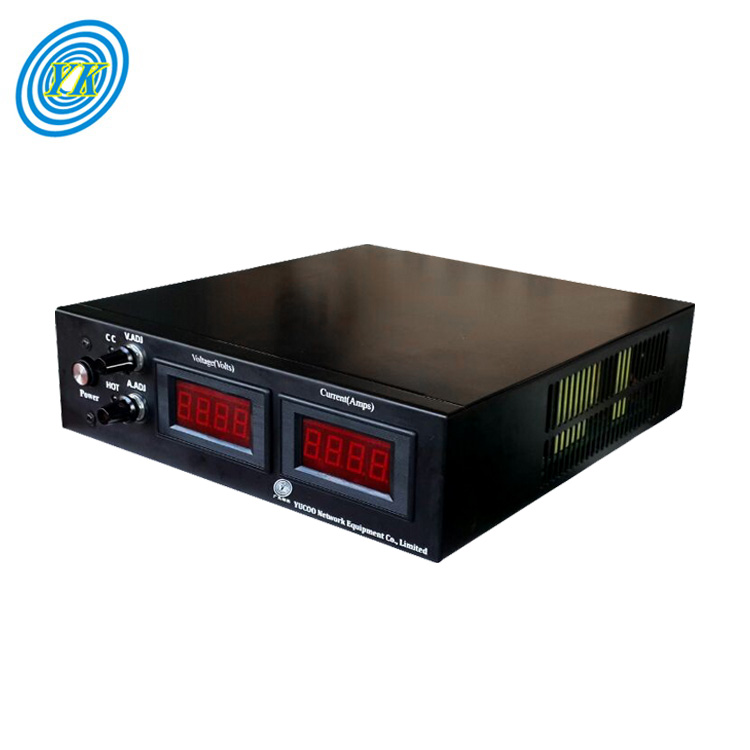
Unleashing the Potential: Variable Power Supplies for Efficient Electric Vehicle Charging
Click: 845 Date: 09/15/2023 10::02::59 AM
Unleashing the Potential: Variable Power Supplies for Efficient Electric Vehicle ChargingThe transition towards electric vehicles (EVs) is a significant step in reducing carbon emissions and improving energy efficiency. A critical aspect of this transition is the development of efficient and flexible charging systems. Variable power supplies can play a pivotal role in this context, enabling more efficient and adaptable charging solutions.The Need for Variable Power Supplies in EV ChargingTraditional charging systems often operate at a fixed power level, which may not always align with the power availability from the grid or the charging needs of the vehicle. In contrast, variable power supplies can adjust the charging power based on various factors such as grid conditions, battery status, and user preferences. This flexibility can lead to more efficient use of energy resources, better battery health management, and improved user experience.Advancements in Variable Power Supplies for EV ChargingSeveral researches and real-world applications have explored different strategies for variable power EV charging, such as "Uncoordinated vs Coordinated charging", "Coordinated control strategy of energy storage system with electric vehicle charging station", and "Fuzzy logic control for an electric vehicles fast charging station".Another critical development is the integration of variable power supplies with smart grid technologies. For instance, flexible EV charging has been studied for its role in integrating variable renewable energy sources into the grid.A research paper titled "Flexible Smart EV Charging" discussed different smart EV charging strategies based on charging behavior, such as instant strategy, allotted-slot strategy, and deferred strategy. These strategies utilize variable power supplies to optimize charging processes based on various factors, including time-of-use tariffs, user schedules, and grid conditions.The Future of Variable Power Supplies in EV ChargingThe advancements in variable power supplies for EV charging are just the beginning. With the continuous development of EV and charging technologies, we can expect more innovative applications of variable power supplies. For instance, wide bandgap silicon carbide (SiC) devices are expected to replace silicon switching devices, allowing a significant reduction in the charger's weight and volume.In conclusion, variable power supplies hold great potential for enhancing the efficiency and flexibility of EV charging. By continuing to explore and develop these technologies, we can support the widespread adoption of EVs and contribute to a more sustainable energy future.
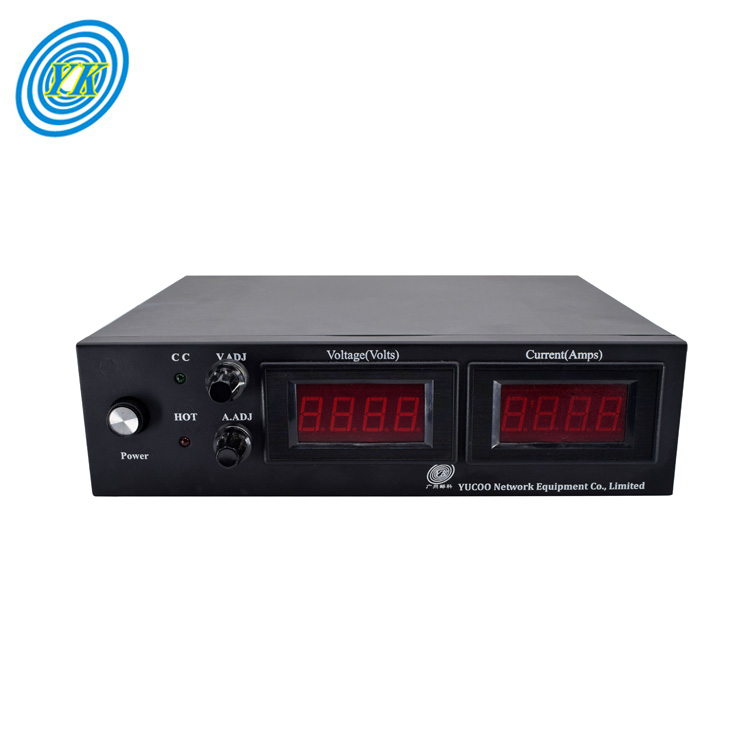
Revolutionizing Power Management: Exploring Variable Power Supplies in Renewable Energy Systems
Click: 703 Date: 09/15/2023 09::34::15 AM
Revolutionizing Power Management: Exploring Variable Power Supplies in Renewable Energy SystemsThe world today is witnessing a paradigm shift from fossil fuels to renewable energy sources. Variable power supplies, an integral part of this transition, are revolutionizing the way we manage power in renewable energy systems. By enabling flexibility and efficiency, these power supplies are significantly contributing to the growth of renewable energy technologies such as wind, solar, and hydropower.Renewable Energy and Variable Power SuppliesRenewable energy sources, by nature, are intermittent and variable. For instance, solar panels generate power only during daylight hours, and wind turbines are dependent on wind conditions. To overcome these challenges, variable power supplies are used. These power supplies can adjust the output voltage and current according to the power demand and the available renewable energy, optimizing energy usage and reducing waste.Variable Power Supplies in Wind Energy SystemsIn wind energy systems, variable power supplies play a pivotal role. They allow the wind turbines to operate at their maximum efficiency, irrespective of the wind speed. When the wind speed is variable, the power supply can adjust the output voltage to ensure the turbine's optimal performance. This not only increases the overall efficiency but also extends the lifespan of the turbine.Variable Power Supplies in Solar Energy SystemsIn solar energy systems, variable power supplies are used to match the output voltage with the load requirements. Solar panels produce DC power, which needs to be converted into AC power for most applications. Variable power supplies, along with inverters, perform this conversion and adjust the output voltage according to the load demand.Variable Power Supplies in Hybrid Renewable Energy SystemsVariable power supplies are also crucial in hybrid renewable energy systems, which combine multiple renewable energy sources. In such systems, the power supply needs to manage the power from different sources and provide a stable output. For instance, in an integrated PV/Wind/Battery/Fuel Cell system, the power management system uses an intelligent algorithm to ensure continuity of power supply to the load while controlling the operations of the renewable energy sources and energy storage systems. The power management system prioritizes renewable energy to supply the load, and the excess energy is stored in batteries or converted into hydrogen fuel.ConclusionVariable power supplies are playing a pivotal role in the growth of renewable energy technologies by ensuring optimal power management. As we continue to explore and develop renewable energy sources, the importance of these power supplies will only grow. By providing flexibility and efficiency, variable power supplies are truly revolutionizing power management in renewable energy systems.
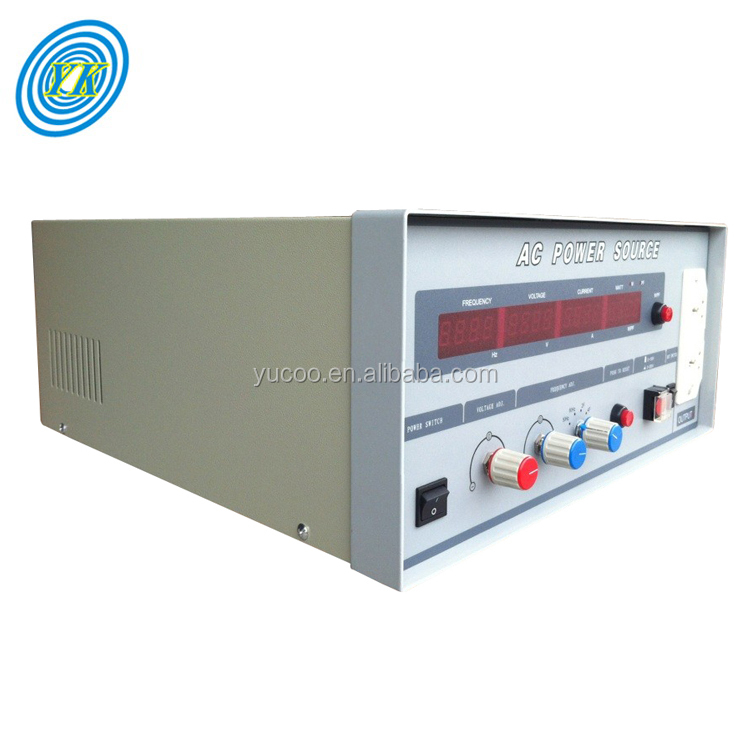
Empowering Electronics: Variable Power Supplies in Circuit Design and Testing
Click: 862 Date: 09/14/2023 4::06::36 PM
Empowering Electronics: Variable Power Supplies in Circuit Design and TestingPower supplies play a crucial role in the design and testing of electronic circuits. A variable regulated power supply offers flexibility and control over the voltage and current output, making it an essential tool for circuit designers. This article explores the benefits and applications of variable power supplies in circuit design and testing, highlighting their role in enabling efficient and reliable electronic systems.Understanding the Fundamentals of Power Supply Design:A solid understanding of power supply design fundamentals is essential for reliable and stable circuit operation.Key components of a power supply include transformers, bridge rectifiers, and capacitors.Isolated power supplies utilize transformers to step down AC voltage, while bridge rectifiers convert AC voltage to DC voltage.Importance of Variable Regulated Power Supplies:Variable power supplies provide the flexibility to adjust the voltage and current output according to the specific requirements of the circuit being designed or tested.They enable the simulation of different voltage levels to assess the performance and behavior of circuits under various operating conditions.Variable power supplies are particularly useful when working with circuits that require different voltage specifications, such as TTL devices (5V) or CMOS circuits (3.3V).Designing a Variable Regulated Power Supply:Designing a variable regulated power supply involves considering the desired voltage range and current output.The aim is to design a power supply that can provide a variable voltage output within a specified range, such as 1V to 25V at 1A.The design process involves selecting appropriate components and ensuring proper regulation and stability of the output voltage.Circuit Design and Optimization:Circuit design plays a critical role in ensuring the efficiency and performance of a variable power supply.Using circuit design tools like LTpowerCAD can simplify the design process and optimize the external components .LTpowerCAD offers calculations for component selection, efficiency optimization, and control loop stability.Testing and Evaluation:While circuit design tools are valuable, thorough hardware evaluation is necessary to assess the performance of the power supply.High-speed switching in switching regulators can introduce noise and affect the load circuit, requiring proper filtering and evaluation.Hardware testing helps identify and mitigate issues related to parasitic effects, thermal management, transient protection, and overall performance.Conclusion: Variable power supplies are indispensable tools in circuit design and testing, offering flexibility, control, and versatility. By providing adjustable voltage and current outputs, they empower electronics designers to simulate different operating conditions and ensure the reliability and performance of their circuits. Understanding the fundamentals of power supply design, utilizing circuit design tools, and conducting thorough hardware evaluation are key steps in harnessing the potential of variable power supplies in circuit design and testing.
